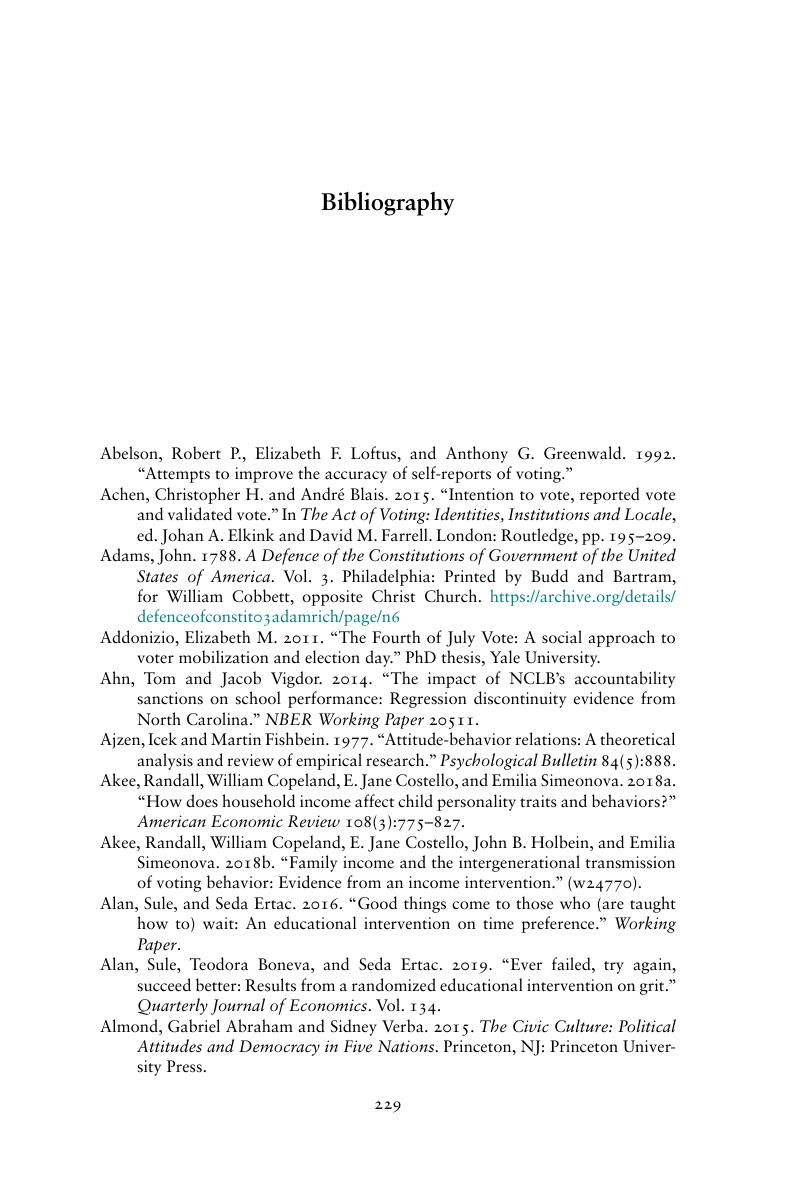Bibliography
Published online by Cambridge University Press: 19 February 2020
Summary

- Type
- Chapter
- Information
- Making Young VotersConverting Civic Attitudes into Civic Action, pp. 229 - 250Publisher: Cambridge University PressPrint publication year: 2020



